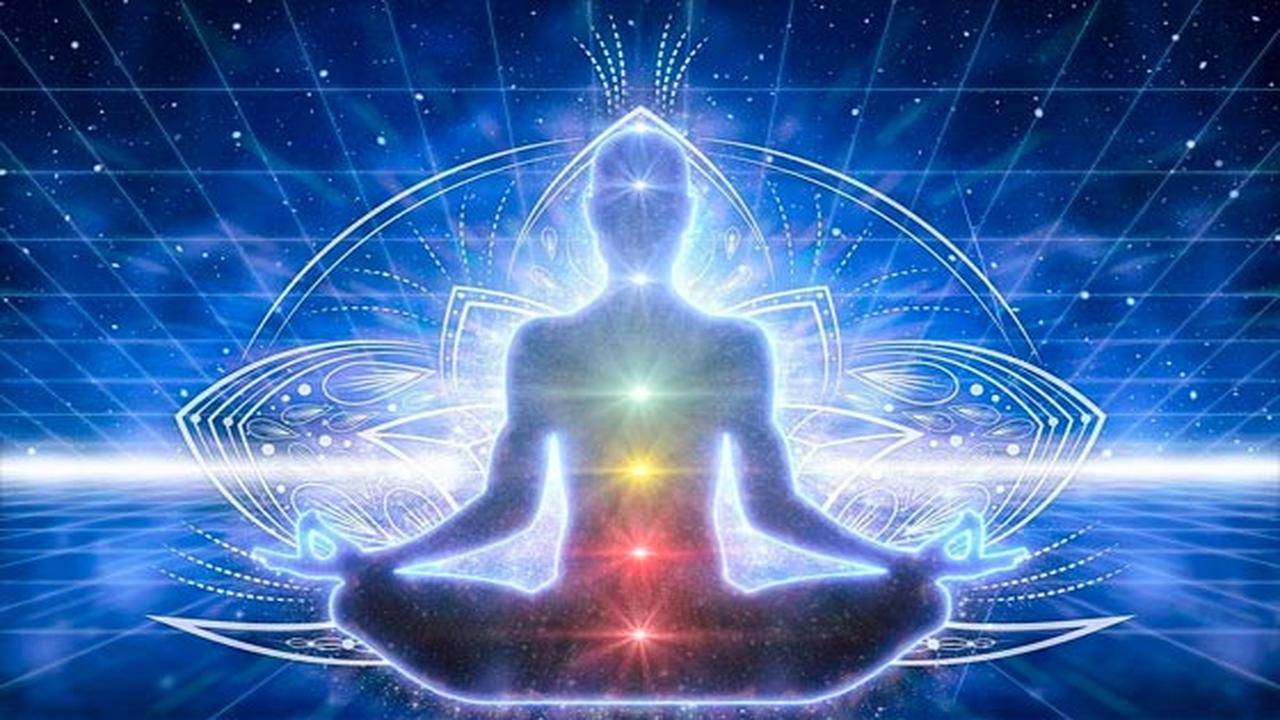The concept of chakras has been around for centuries and has gained popularity in recent years among those interested in spirituality and self-improvement.
The root chakra is the first of seven chakras, located at the base of the spine, and it plays a vital role in our physical, emotional, and mental well-being.
The root chakra represents our foundation and the grounding force that connects us to the earth. It is associated with feelings of safety, security, stability, and survival.
What is Root Chakra?
The root chakra is also known as Muladhara in Sanskrit. Muladhara comes from two words: Mula meaning ‘root’ or ‘foundation’ and Adhara meaning ‘support.’ Therefore, it can be translated as a support for our foundation or roots.
It is represented by a lotus with four petals containing squares of different colors symbolizing the four elements: earth (brown), water (white), fire (red), and air (yellow).
Significance in Our Lives
A balanced root chakra ensures that we feel grounded, safe, secure which provides us with a sense of confidence to move forward in life without fear or anxiety.
When this chakra is out of balance or blocked it can lead to negative feelings such as insecurity, lack of trust in oneself or others along with physical symptoms such as lower back pain constipation etc.
The Importance of Meditation for Balancing Root Chakra
Meditation has been used for thousands of years to help people achieve peace within themselves while improving their mental health. It involves deep breathing exercises along with visualization techniques that can help one focus on their inner self while clearing their mind from external distractions.
Root Chakra meditation helps us connect with our innermost self, where we can find peace and feel grounded.
It helps to release negative energies and emotions that are blocking the flow of energy through the root chakra. Regular practice of root chakra meditation can lead to a more balanced and stable way of life as well as an overall sense of well-being.
Understanding the Root Chakra
The root chakra, or Muladhara in Sanskrit meaning “root support,” is the first of the seven chakras in the body. It is located at the base of the spine, near the coccyx or tailbone. This chakra is associated with our fundamental needs for survival such as food, water, shelter, and safety.
A balanced root chakra is characterized by a sense of security, stability, and groundedness. When this chakra is open and flowing freely, we feel connected to our physical body and mother earth.
We have a strong foundation on which to build our lives and face challenges with confidence. We trust that we will be provided for and have faith in our ability to take care of ourselves.
On the other hand, an imbalanced or blocked root chakra can lead to feelings of insecurity and instability. Physical symptoms may include lower back pain, constipation or diarrhea, muscle tension in legs or feet.
Emotionally we may experience anxiety about basic needs like money and housing or a lack of trust in one’s ability to take care of oneself. It’s important to note that while these symptoms may indicate an issue with the root chakra it’s always best to see a medical professional if you are experiencing any physical discomforts.
Definition and Location
The root chakra can be visualized as a red spinning wheel located at the base of our spine between our anus and genitals. It governs over our sense of grounding through its connection with gravity which gives us stability on earth.
The Muladhara energy center embodies security; it connects us with physicality as well as helps us understand what it means when we say “I am”. The feeling that “I am safe” & “I belong here” comes from this first Chakra which is related to Earth element.
Characteristics and Qualities of a Balanced Root Chakra
A balanced root chakra allows us to feel secure, grounded, and at peace in our physical body. It helps us connect with the present moment and understand our place in the world. When the root chakra is balanced we trust ourselves and our ability to navigate challenges with confidence.
We feel a sense of belonging and connection with others as well as mother nature. We have healthy boundaries, good physical health, and experience joy in basic pleasures such as food or being outdoors.
Symptoms of an Imbalanced or Blocked Root Chakra
When the root chakra is blocked or imbalanced it can manifest physically, mentally, or emotionally. Some common signs of an imbalanced root chakra include lower back pain or stiffness, digestive issues such as constipation or diarrhea, anxiety around basic needs like housing or finances.
Emotionally we may feel disconnected from our physical body; lacking trust in one’s ability to provide for oneself; fear around change; insecurity around belongingness.
These symptoms can be addressed through meditation on the root chakra along with other practices such as yoga, therapy, etc. understanding what the Root Chakra is and how it functions is essential to begin working on balancing this energy center so that it becomes balanced again.
Benefits of Root Chakra Meditation
Meditation is an effective practice that can help you achieve balance and harmony in your life. Root chakra meditation, in particular, has numerous physical, emotional, and mental benefits.
It can help you achieve a deeper sense of security, stability, and groundedness while improving the flow of energy throughout your body. Here are some of the incredible benefits of regularly practicing root chakra meditation:
Improved Sense of Security and Stability
The root chakra is responsible for providing us with a sense of safety and security in our lives. Imbalances or blockages in this chakra can lead to feelings of anxiety or insecurity.
Practicing root chakra meditation can help you feel more grounded and secure by providing a sense of connection to the earth. During meditation, focus on the base of your spine where the root chakra is located.
Imagine a red light glowing at the base as you breathe deeply and slowly. This visualization technique helps to balance this energy center which leads to an improved sense of stability.
Increased Energy Flow throughout the Body
The root chakra is also responsible for the flow of energy throughout our bodies. When it’s blocked or imbalanced, we may feel sluggish or tired. Regularly meditating on this energy center can help improve circulation while boosting overall vitality.
Breathing exercises are particularly helpful when it comes to increasing energy flow throughout our bodies during root chakra meditations. Focus on deep breathing while envisioning roots growing from your feet into the earth as if you’re tapping into its life force energy.
Emotional Healing
The root chakra has deep connections with our emotional well-being as it’s associated with feelings related to survival such as fear, self-preservation, and grounding. Practicing root chakra meditation can help us heal from past traumas and negative experiences, leading to a greater sense of emotional stability.
During meditation, allow yourself to feel any emotions that come up without judgment or resistance.
Focus on cultivating compassion for yourself as well as others. Using affirmations such as “I am safe and protected” can also help bring emotional healing during root chakra meditations.
Mental Clarity
An imbalanced root chakra can also lead to mental fog or lack of clarity. By practicing regular root chakra meditations, we can improve our mental clarity, focus and concentration which ultimately leads to a more peaceful state of mind.
A simple yet effective technique is to imagine roots extending from the base of your spine deep into the earth while envisioning any scattered thoughts being absorbed by the earth’s energy. This visualization helps ground you in the present moment while improving mental clarity.
Root chakra meditation holds numerous benefits that not only balance our physical bodies but also support emotional and mental healing.
By regularly practicing this type of meditation, we create a foundation of security, stability, and groundedness within ourselves which allows us to move forward in life with confidence and positivity.
How to Meditate on the Root Chakra
Preparation for Meditation
Before starting with root chakra meditation, it is essential to set up a comfortable space where you can sit undisturbed for at least 15-20 minutes. You can sit cross-legged on a cushion or use a chair with your feet flat on the ground. Find a quiet place where you won’t be interrupted or distracted.
Turn off all electronic devices and dim the lights to create a calm and soothing atmosphere. Once you have set up your meditation space, take a few deep breaths to relax your body and mind.
Focus on your inhalation and exhalation, allowing yourself to let go of any tension or stress you may be holding onto. Deep breathing helps activate the parasympathetic nervous system, which promotes relaxation and reduces stress levels in the body.
Guided Visualization Techniques
Visualizing the root chakra as a vibrant red spinning wheel located at the base of your spine can help focus your attention during meditation.
Imagine energy flowing into this area as you inhale, filling it up with vitality and strength. As you exhale, imagine any tension or negativity leaving your body through this chakra.
You can also visualize yourself rooted firmly to the ground like a tree with strong roots extending deep into the earth.
Imagine these roots absorbing nutrients and energy from Mother Earth, nourishing both your physical body and soul.
Affirmations to Strengthen and Balance
Affirmations are powerful statements that help reprogram negative thought patterns into positive ones.
During root chakra meditation, repeat affirmations such as “I am safe,” “I am secure,” “I trust myself,” “I am grounded” or any other affirmations that resonate with you personally.
When using affirmations during meditation, it’s important to focus on the words and imbue them with meaning and intention.
Visualize the energy of these words flowing through your body, strengthening and balancing your root chakra.
Integration
After completing your meditation, take a few moments to integrate the experience. Slowly open your eyes and take a deep breath.
Notice how you feel in your body and mind. If you feel any discomfort or tension, take a moment to stretch or move gently before returning to your daily activities.
It’s essential to remember that root chakra meditation is a practice – the more you do it, the more effective it will be at balancing this important energy center in your body. Incorporate meditation into your daily routine for optimal results.
Tips for Maintaining a Balanced Root Chakra
Incorporating Physical Activities
Physical activities can be an effective way to balance the root chakra. Yoga, in particular, is a great way to ground your energy and connect with your body.
There are many poses that cater specifically to the root chakra, such as the tree pose and the mountain pose. These poses help activate the root chakra while grounding and stabilizing your physical body.
Walking is another excellent physical activity that can help balance the root chakra. While walking, focus on connecting with your environment.
Pay attention to the sensation of your feet touching the ground and visualize roots extending from your feet into the earth. This visualization will help you feel grounded and connected.
Eating Grounding Foods
Another way to balance the root chakra is through diet. Eating grounding foods such as root vegetables like carrots, potatoes, onions, and beetroot can make a significant difference in balancing this energy center.
Additionally, incorporating protein-rich foods like beans, lentils, nuts or meat into your diet will help strengthen the foundation of the body’s energy system by providing it with vital nutrients.
Practicing Gratitude
Gratitude can also play an important role in balancing our energy centers including our root chakra. Developing an attitude of gratitude helps us appreciate our present situation better while reducing anxiety or other negative feelings related to uncertainty about life circumstances.
To practice gratitude try spending some time each day reflecting on what you’re grateful for whether it’s family, friends or small moments throughout your day that brought you joy or comfort.
It’s equally essential to express thanks when someone has helped you out or accomplished something meaningful in their lives.
Mindfulness Practices
Mindfulness practices including meditation are highly recommended for balancing all seven of our main chakras. Mindfulness practices help us connect to the present moment, reducing stress, anxiety, and promoting relaxation.
Mindfulness can be practiced in different ways such as paying attention to your breathing, meditating while focusing on a specific object or mantra, taking a mindful walk or simply practicing mindful awareness throughout your day.
There are many ways to balance the root chakra beyond meditation. Physical activities like yoga and walking offer a grounding effect on our energy centers.
Eating grounding foods nourishes and strengthens our bodies from within while practicing gratitude and mindfulness helps reduce stress and maintain mental clarity. By incorporating these practices into your daily routine, you can maintain a healthy balance in both your body and mind.
Final Thoughts on Maintaining a Healthy Balance
Meditation is an essential practice that can help keep our minds, bodies, and souls in balance. Through consistent meditation practices focusing on the root chakra, we can cultivate greater feelings of security, stability, and groundedness allowing us to live more fully.
As you continue to incorporate these practices into your daily life, remember that balance is not about perfectionism but rather about finding ways to support yourself through all life’s ups and downs.
With time and dedication, you will find that maintaining a healthy balance becomes more natural as you connect with your highest self.




























































